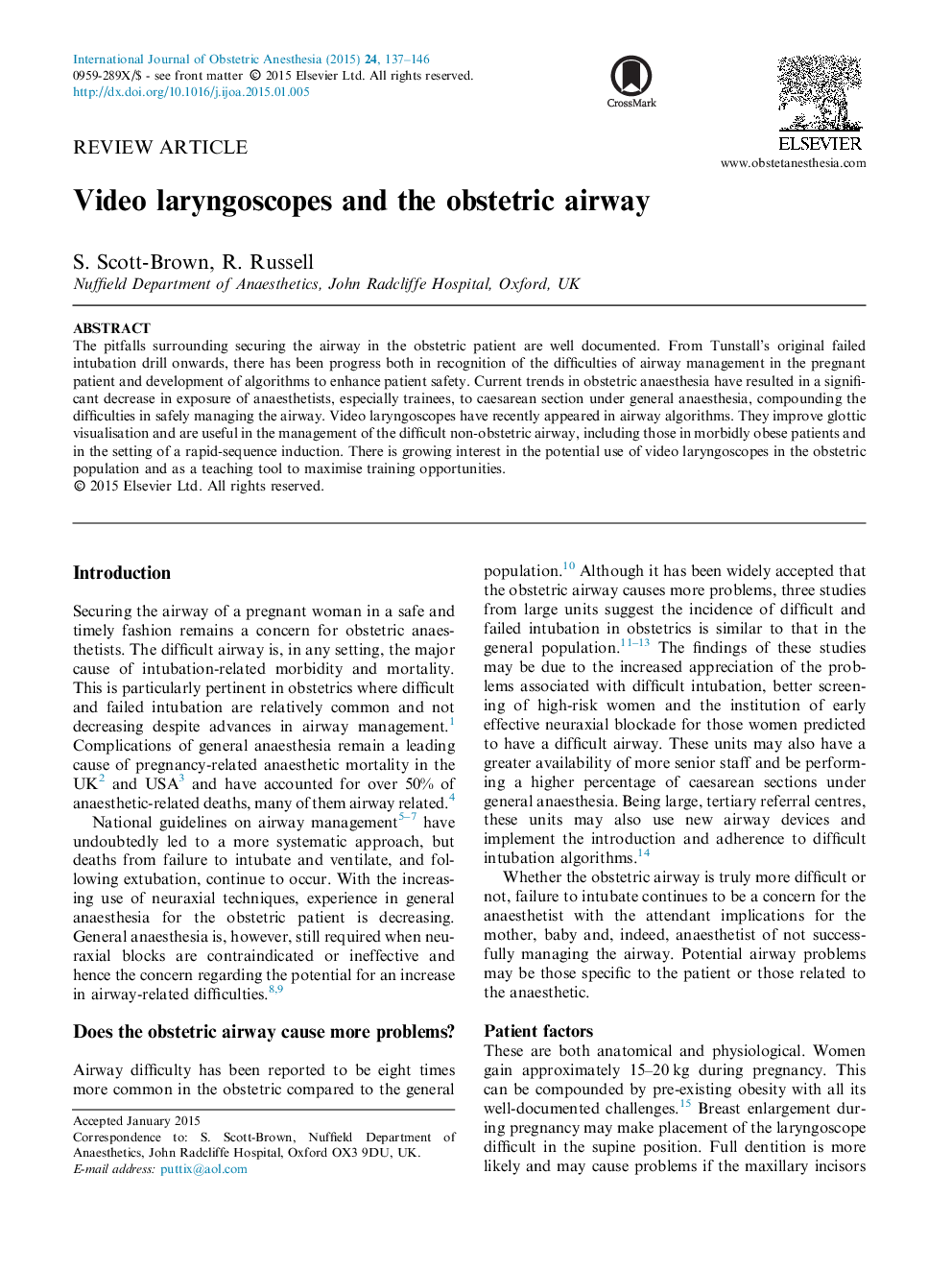| Article ID | Journal | Published Year | Pages | File Type |
|---|---|---|---|---|
| 2757583 | International Journal of Obstetric Anesthesia | 2015 | 10 Pages |
•Airway problems are more commonly reported in the obstetric compared to the general population.•Video laryngoscopy has been shown to be effective in the management of the difficult airway.•There is no current evidence to suggest that one video laryngoscope is better than another.•Video laryngoscopy may play an increasing role in obstetric anaesthesia.
The pitfalls surrounding securing the airway in the obstetric patient are well documented. From Tunstall’s original failed intubation drill onwards, there has been progress both in recognition of the difficulties of airway management in the pregnant patient and development of algorithms to enhance patient safety. Current trends in obstetric anaesthesia have resulted in a significant decrease in exposure of anaesthetists, especially trainees, to caesarean section under general anaesthesia, compounding the difficulties in safely managing the airway. Video laryngoscopes have recently appeared in airway algorithms. They improve glottic visualisation and are useful in the management of the difficult non-obstetric airway, including those in morbidly obese patients and in the setting of a rapid-sequence induction. There is growing interest in the potential use of video laryngoscopes in the obstetric population and as a teaching tool to maximise training opportunities.
